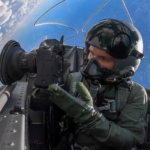Air Refueling was present for many decades in aviation, however it was always reserved only for military aircraft and helicopters… until now. Ex-Navy and USMC pilots, currently based in Texas, are on a successful mission to convert agricultural aircraft into a flying tanker.
Air Refueling proved its effectiveness in many military operations, extending the range and operational capabilities of various aircraft. Usually, such flights and specially adopted tankers can only be afforded by rich countries and armed forces, as they are normally related with large transport aircraft adapted to AAR (Air-to-Air Refueling) operations – the cost of purchasing such machines is approx. USD 30-100 million, along with high flying costs and usually flying at high minimum speeds, which does not make the task easier for pilots.
Former military pilots who are now associated with Victory Aviation (headquartered in Texas) decided to create a platform that would solve the problems on both military as well as civilian side. The Air Force or the Army will be able to provide much easier and affordable air refueling for their helicopters, while civilian operators will be able to perform the most important flights more easily, such as firefighting, search, humanitarian or medical flights or delivery of priority cargo. The plane is quite universal – it can fly as a classic machine or in the OPA version – Optionally Piloted Aircraft – perform semi- or fully-autonomous missions.
The official name of the aircraft is KC-1000 “Doerbird”. KC is the official military nomenclature for airborne refueling, and the number 1000 is derived from the ability to deliver more than 1,000 gallons of fuel; built on the basis of the agricultural Thrush aircraft. Agricultural planes are very suitable for such tasks, as they usually already have large built-in tanks for spraying and extinguishing fluids, so converting it into a flying “fuel tank” was much easier than with regular General Aviation class aircraft.
After building the pod and integrating the system with the plane, there were concerns about interference of the retractable cable (“drogue” system) with the rear wheel and control surfaces, therefore the entire hydraulic system was built into a dedicated V-Pod. Such solution also allows for higher modularity and easier integration on other machines. During the test flights, in the close formation with the UH-60 Blackhawk, great attention was paid to the aerodynamic factors and the footprint as well as possible turbulence behind the tanker aircraft. In the case of the Blackhawk helicopter (used for testing), which is dimensionally quite similar to the Doerbird, pilots saw almost no disruptions or changes in the machine’s behavior.
Plans for the upcoming months are the continuation of test flights and full certification in the United States, with the support of the US government and armed forces, to integrate the KC-1000 into military machines. Within upcoming year, it is also planned to open a branch in Europe and provide “Air Refueling On Demand” to interested aviation companies, SAR and fire fighting organizations as well as private pilots – this will avoid the high cost of acquiring the entire structure and allow to use AAR “by the hour” only when such operations are required.
The system requirements are quite simple – standard MA-2 nozzle (fixed or telescopic), mounting system, and integration with the fuel system. Helicopters have been using air refueling for many years, so such modifications could be made directly by the manufacturer. In the case of aircraft, there are currently conversations underway with various suppliers of aircraft parts to be able to modify larger civil aircraft such as the Beechcraft King Air and the Air Tractor AT-802. The issue of exporting and using the system in Europe is currently regulated by ITAR (International Traffic in Arms Regulation), but Victory’s pilots assume that all necessary permits and authorizations will be obtained within the next year.
Pictures: Victory Special Missions


 Polski
Polski
